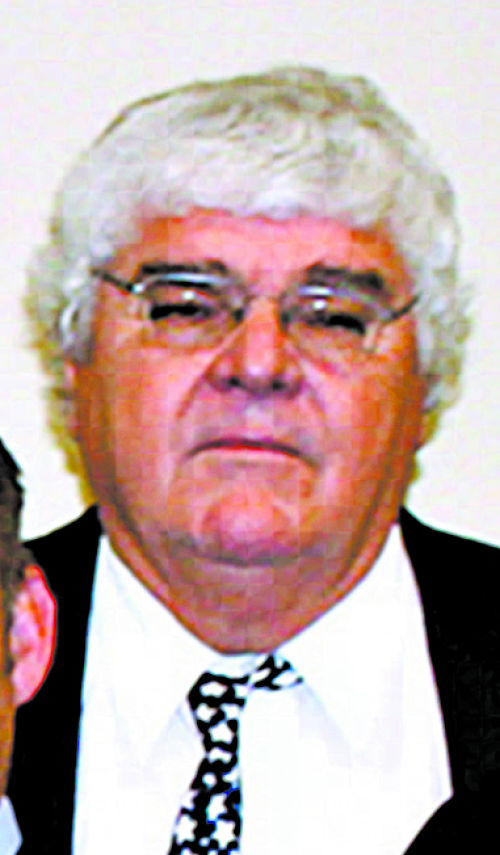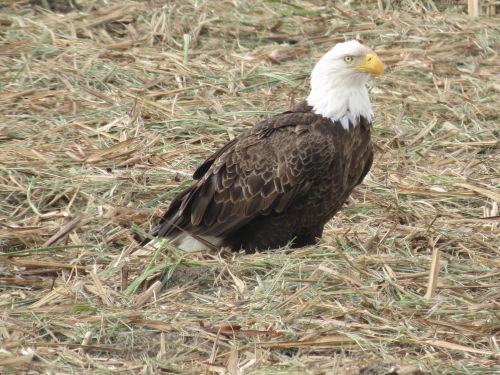
Common Core: Parents unite in protest of curriculum
November 20, 2013
Laf. rejects revenue swap for new jail
November 20, 2013The eagle glanced warily toward a car stopped on the roadside, majestic even standing at ground level, lording over a cane field now flat from the harvest.
A series of aborted takeoffs and sideways hops increased the distance between the creature and La. Highway 648 in Thibodaux by about 200 feet, placing it closer to the structures of Nicholls State University.
Unmistakable white feathering about the head and tail, along with sharp yellow eyes, disclosed an approximate age of 5 years.
Researchers say bald eagle appearances close to heavily populated places in southeast Louisiana are becoming more frequent. And new studies are showing that Louisiana eagles travel farther during their annual migrations than ever before known.
“They are becoming increasingly urbanized,” said LSU graduate student Nick Smith, whose unprecedented studies of bald eagles in Louisiana is getting attention in wildlife research circles. “They are nesting more frequently in urban areas and reproducing quite well.”
The comeback of bald eagles from extinction’s brink, largely attributed to banning of the pesticide DDT as well as unchecked habitat destruction, is an old story.
The “exponential” growth of eagle populations during recent years is new, as is knowledge, through Smith’s research that the bayou state’s eagles migrate as far as Canada.
“We always knew they went north, but we never knew exactly where,” said Smith, whose studies of haliaeetus leucocephalus – the national symbol’s scientific name – are part of a cooperative effort between the Louisiana Department of Wildlife and Fisheries, the US Geological Survey, LSU and the Wildlife Management Institute.
Using GPS technology, Smith is tracking eagles from Louisiana to their summer destinations.
British Columbia and Manitoba are among the places Louisiana eagles travel to, returning to their bayou state nests in winter.
Smith’s work complements long-standing eagle Louisiana research by LDWF biologist Thomas Hess, who was among scientists documenting the bounce-back of bald eagles after losing nests to Andrew and other tropical cyclones.
The story of their recovery overall is still seen as amazing, said LDWF biologist Will Selman.
“In the last 25 to 30 years, bald eagles went from almost non-existent to more than 500 nesting pairs to date in Louisiana,” Selman said, noting that Terrebonne and Lafourche have one of the highest densities of bald eagles in the state. “You’ll find them at the marsh-swamp interface, where the cypress meets the marsh.“
The migration patterns that Smith’s research has thus far identified are, to Selman, nothing less than amazing.
“They come out of Louisiana much like a tornado and migrate north and west,” is how Selman describes it. Studies of Florida eagles show that they tend to migrate up and along with east coast, unlike their Louisiana cousins.
That more eagles are being noticed closer to populated areas should not be seen as unusual, according to Selman, as the populations continue to grow.
“The initial individual that colonizes an area will take the best territories,” he said. “As younger eagles come back they are going to move to more marginal habitat.”
The success story of bald eagles in Louisiana is something in which Louisiana should take great pride, according to Selman and other scientists.
“Louisiana now has a long standing record of bringing endangered species back,” Selman said. “The American alligator, the brown pelican and the bald eagles are the most successful endangered species stories. Louisiana has had a hand in all three of them.”
A bald eagle rests in a newly cut cane field alongside La. Highway 648 near Nicholls State University.









